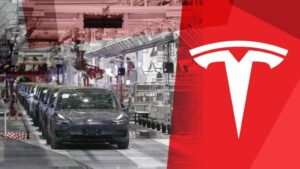
In August 2023, the United States announced a new round of tariffs affecting approximately 90 countries, with rates reaching as high as 50%. This development has heightened discussions about alternative production and sourcing strategies, as companies navigate the complexities of increased costs and geopolitical risks. The combined impact of tariffs, rising labor expenses overseas, and a growing emphasis on supply chain resilience is driving a notable shift towards reshoring.
Impact of Tariffs on Industries
The ramifications of these tariffs are felt unevenly across various sectors. Manufacturers and retailers that rely heavily on imports are facing significant cost pressures, prompting many to reconsider their production strategies. For instance, Foxconn, the largest supplier for Apple, has recently expanded its operations in countries such as Vietnam, the United States, India, and Mexico. In contrast, domestic U.S. manufacturers that primarily source locally are positioned to remain competitive and mitigate risks associated with supply chain disruptions.
Complicating matters further, potential retaliatory measures from trade partners like Canada and Mexico are on the horizon. Although goods compliant with the United States-Mexico-Canada Agreement (USMCA) are generally exempt from tariffs, the U.S. has implemented additional tariffs of 25% on specific imports related to border security and drug trafficking. While both countries are engaged in negotiations to address these border security concerns, companies reliant on free trade in North America, particularly in the automotive sector, are already feeling the impact.
Retailers are particularly vulnerable to these changes. Increasing import costs threaten to squeeze profit margins and could lead to higher consumer prices, potentially dampening spending in an already cautious market. Walmart recently reported stronger-than-expected sales but lower profits due to heightened costs from imported goods. Executives indicate that they may need to increase prices on 10% of their inventory to counterbalance these expenses. The transition to sourcing more U.S.-made products is complex and time-consuming, especially for items that have not been manufactured domestically in years.
Reshoring’s Growing Appeal
The conversation surrounding reshoring is not new. In fact, the Boston Consulting Group forecasted back in 2011 that China’s cost advantages would diminish, largely due to increasing wages and shipping costs. The disruptions caused by the pandemic have further accelerated this shift, prompting manufacturers to prioritize risk mitigation in their sourcing strategies. Companies that acted early to diversify their supplier bases and reduce reliance on China are currently in a stronger position to adapt to the latest wave of tariffs.
Although a complete withdrawal from China is unlikely, there is a growing trend towards a more regionalized production approach. Factors beyond tariffs and pandemic disruptions are driving this momentum. Legislative measures such as the CHIPS and Science Act have stimulated significant investments in semiconductor manufacturing, with companies like Taiwan Semiconductor establishing facilities in Arizona and Samsung in Texas. The Inflation Reduction Act has similarly prompted investments in electric vehicle and battery production, exemplified by Ford’s development of the BlueOval City campus in Tennessee.
Despite this positive trend, the journey towards reshoring is fraught with challenges. The capital-intensive nature of these investments necessitates a strategic approach to determine suitable locations for both immediate and long-term success. In addition to competition from burgeoning data center developments, the availability of industrial sites is increasingly limited due to significant projects like TSMC’s $40 billion plant in Arizona and IBM’s $20 billion facility in New York.
As companies seek to establish new production sites, they must navigate complex zoning regulations, environmental reviews, and necessary infrastructure upgrades, which can often take years and require considerable investment. The electric grid is also feeling the strain, as rising industrial demand coupled with rapid data center growth leads to delays in power supply and infrastructure challenges. Moreover, labor shortages present ongoing difficulties; even with advancements in automation, new facilities still require a consistent supply of skilled workers.
Future Prospects for Reshoring
While the case for reshoring is compelling, translating policy gains into operational success will require collaboration between industry leaders, government officials, and local communities. Companies must evaluate their exposure to tariffs and model the cost implications of various tariff scenarios. Strategies such as alternative sourcing, regional supply chain realignment, and local investment may become essential.
The current convergence of trade protectionism, geopolitical risks, and technological advancements could signal a pivotal moment for the manufacturing landscape. If companies respond proactively with strategic investments and adaptive supply chain practices, the year 2025 could mark a significant turning point in the evolution of U.S. manufacturing. As Michelle Comerford, the industrial and supply chain practice leader at Biggins Lacy Shapiro & Co., notes, “The reshoring discussion is not about returning to the past but about building a more resilient and agile manufacturing base for the future.”






